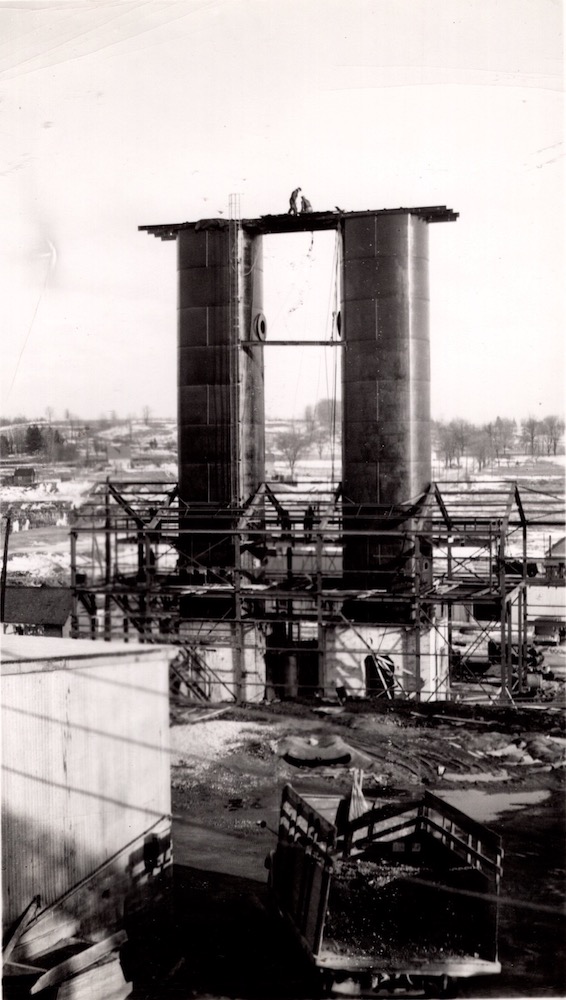Vertical Kiln Construction

1939-1940
Source: Mr. T.F. Robinson, Beachville District Museum collection – 1995.20.06
In this image, two people work on a platform between two vertical kilns (the cylindrical structures) that rise from a building frame.
Vertical kilns are sometimes called shaft kilns. Early vertical kilns were about 60 square feet in cross-section and had a daily capacity of about 75 tons of lime. Gas-powered, vertical kilns could produce 170 tons a day.
In a vertical kiln, limestone is loaded from the top and descends through the kiln as it is heated. The heat is often applied by burning fuel at the bottom of the kiln, and the limestone moves downward countercurrent to the rising hot gases. Vertical kilns are often considered more energy-efficient since they don’t require the continuous rotation of a large mass. Industrial applications often favour rotary kilns due to their higher capacity and better control over product quality, while vertical kilns may be more suitable for smaller-scale or specialized operations.
By 1960, this Gypsum site became a division of Dominion Tar & Chemical Co. Ltd. (known as Domtar). While some remnants of the Domtar site can still be seen in Beachville, these kilns are no longer visible today.

